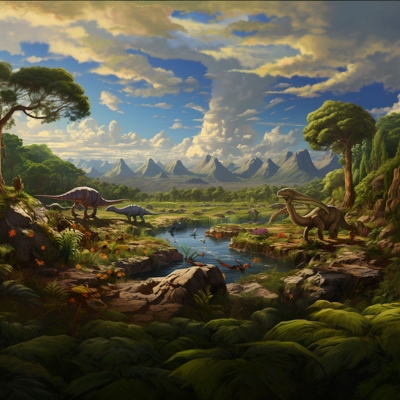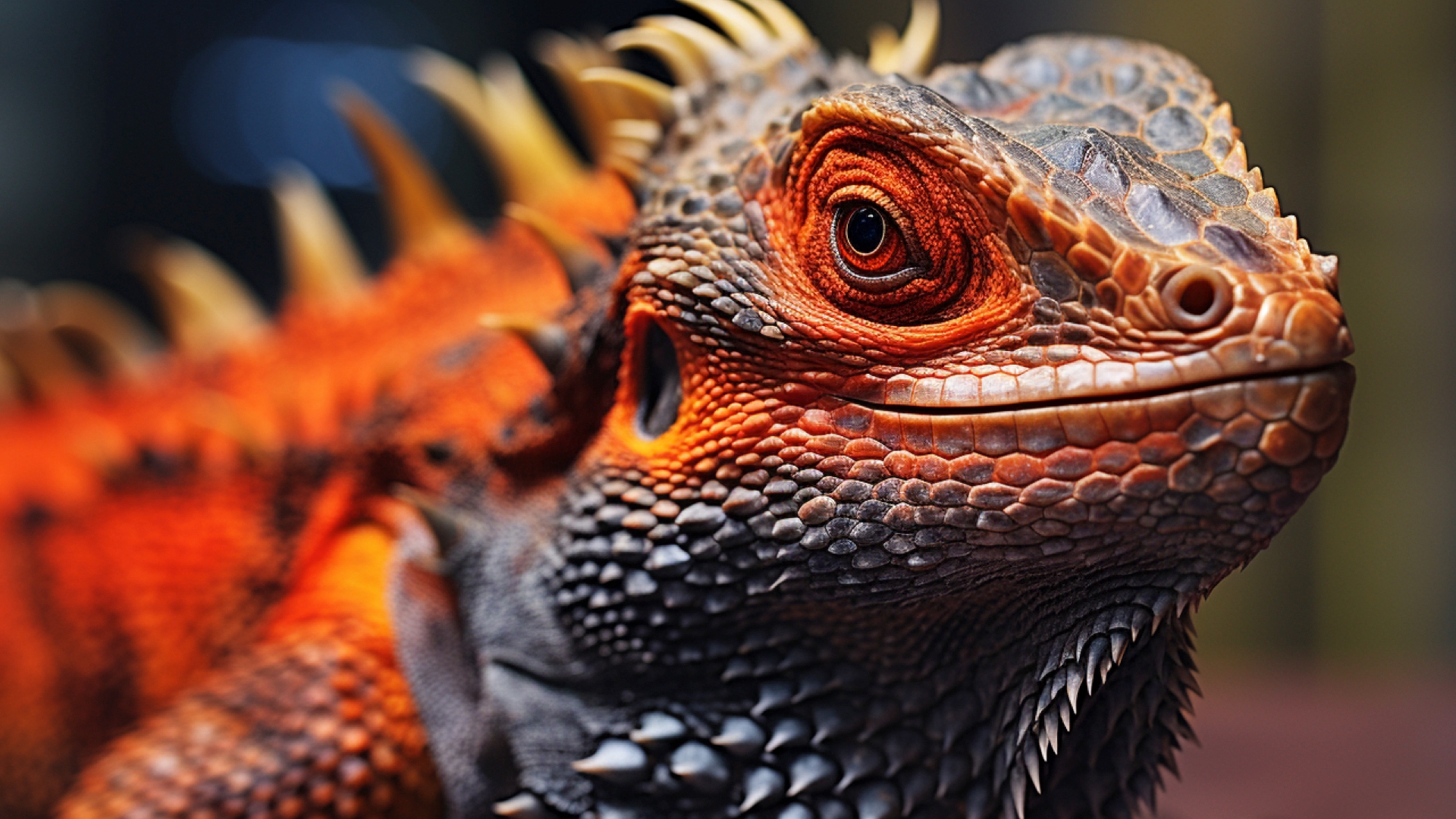The Ancient World of Reptiles:
Evolutionary Wonders
Summary:
This article explores the ancient and enduring world of reptiles, creatures that have captivated our imagination for generations. From their early evolutionary origins, through the Mesozoic Era—often referred to as the Age of Reptiles—we delve into the iconic reptiles of the past, including the majestic dinosaurs. We explore how reptiles have adapted and survived through multiple mass extinctions, evolving into the diverse array of species we know today. The article also touches on the significant place reptiles hold in human mythology and culture, and it brings attention to the current conservation challenges these animals face. As living narratives of Earth’s evolutionary story, reptiles are not only a link to our planet’s past but are also an essential part of its future.


- The Dawn of Reptiles: Origins and Early Evolution
- The Mesozoic Era: The Age of Reptiles
- Iconic Reptiles of the Past: Dinosaurs and Beyond
- The Survival and Adaptation of Reptiles
- Modern Descendants: From Crocodiles to Geckos
- Reptiles in Human Mythology and Culture
- The Current State of Reptiles: Conservation and Threats
In the vast tapestry of Earth's history, few creatures capture our imagination like reptiles. From the colossal dinosaurs that once dominated the land to the myriad of diverse species that inhabit our world today, reptiles are a living testament to evolutionary resilience and adaptability. In this article, we will journey back in time to explore the ancient world of reptiles, delving into their origins, their reign, and their enduring legacy as evolutionary wonders.
Reptiles first appeared on Earth around 310-320 million years ago during the Carboniferous period. These early reptiles were small, lizard-like creatures that marked a significant evolutionary step, as they were among the first animals to have amniotic eggs, allowing them to reproduce on land. This adaptation gave them a distinct advantage over amphibians, which needed water to lay their eggs, and set the stage for the reptilian lineage to diversify into a wide array of forms and conquer various terrestrial habitats.
The Mesozoic Era, spanning from 252 to 66 million years ago, is often referred to as the Age of Reptiles. During this time, reptiles were the dominant terrestrial vertebrates, and their diversity was astonishing. The most famous of these reptiles are, of course, the dinosaurs, which included both carnivorous and herbivorous giants. However, the Mesozoic was also home to a variety of other reptiles, including the flying pterosaurs and the marine reptiles like ichthyosaurs and plesiosaurs.
When we think of ancient reptiles, dinosaurs often steal the spotlight. From the towering Tyrannosaurus rex to the long-necked Brachiosaurus, these creatures are icons of prehistoric life. But the ancient world was also inhabited by other remarkable reptiles. The Megalania, for example, was a giant monitor lizard that roamed Australia, and the Sarcosuchus was a colossal crocodile-like reptile that lurked in the rivers of Africa.
Despite multiple mass extinctions, including the catastrophic event that ended the reign of the dinosaurs 66 million years ago, reptiles have demonstrated remarkable resilience. They have adapted to a wide range of environments, from deserts to rainforests, showcasing a stunning array of forms and behaviors. Today’s reptiles, including snakes, lizards, crocodiles, and turtles, are a testament to this incredible evolutionary journey.
Today, reptiles continue to thrive and diversify, with over 10,000 species known to science. From the formidable Nile crocodile to the delicate and colorful geckos that adorn tropical habitats, modern reptiles are a vibrant and integral part of the world’s ecosystems. They continue to evolve, adapting to the changing environments of our planet, and in doing so, they carry with them the legacy of their ancient ancestors.
Throughout human history, reptiles have held a significant place in our stories and beliefs. In ancient Egypt, the crocodile god Sobek was revered and feared, while in Mesoamerican cultures, the feathered serpent god Quetzalcoatl was a central figure. Today, reptiles continue to inspire, appearing in literature, art, and film, often symbolizing themes of transformation, mystery, and primal power.
In our modern world, reptiles face numerous challenges. Habitat loss, pollution, climate change, and illegal trade are significant threats to many species. Conservation efforts are underway around the globe to protect these remarkable creatures. From the Galápagos giant tortoise to the critically endangered Hawksbill turtle, concerted efforts are being made to understand, protect, and preserve these ancient animals for future generations.
As we retrace the steps of reptiles through time, we are reminded of the profound capacity for life to adapt, survive, and thrive in an ever-changing world. These creatures, from the majestic dinosaurs of the past to the vibrant reptilian life of today, are a living narrative of Earth’s evolutionary story. As we look to the future, it is our responsibility to protect and preserve these remarkable animals, ensuring that they continue to be a part of our world’s rich and diverse tapestry of life.


